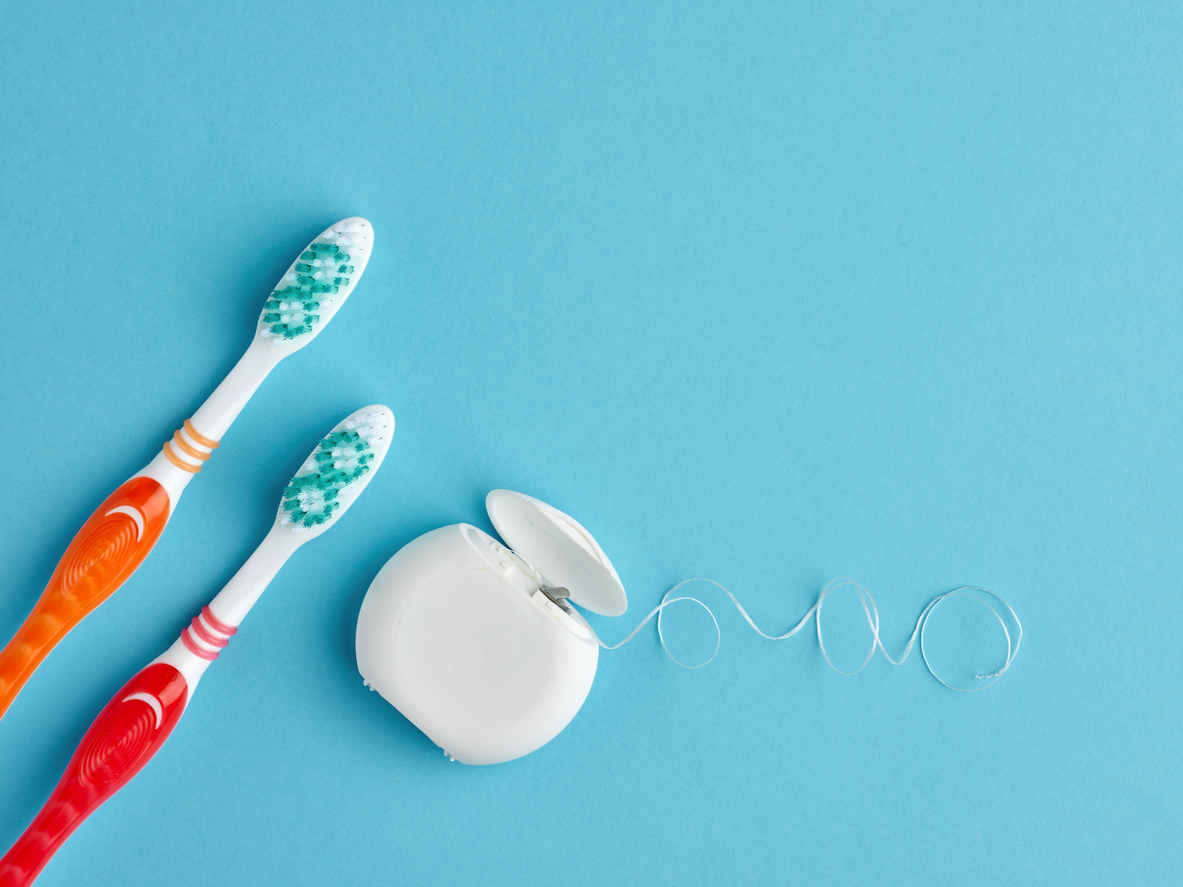Any reliable full-service dentist will stress the importance of daily and thorough oral hygiene at home to prevent dental health issues. In this article, we discuss proper brushing and flossing techniques that will help you maintain a bright smile for years to come.
Proper Brushing and Flossing Techniques
Brush Correctly
You should put your brush at a 45-degree angle to the gums and brush your teeth on the front, back, and along the chewing surface. Dentists recommend that you spend at least two minutes brushing your teeth twice a day, in the morning and the evening.
Make sure to brush thoroughly, especially in hard-to-reach areas at the back of your mouth. For your evening routine, try to brush your teeth right before bed when you are certain you are not going to eat afterward. The body produces less saliva when we are asleep and gives bacteria more opportunity to grow, so it is essential to remove the bacteria before that time.
Some dentists also recommend brushing your teeth after breakfast to keep your teeth free of food residue and bacteria until you sit for lunch.
Use a Fluoride Toothpaste
Fluoride is effective at remineralizing the enamel of our teeth, thus strengthening it and making it more resistant to bacteria. Using fluoride toothpaste daily can reduce the risk of cavities and gum disease.
If you want to boost your oral health and the resilience of your teeth and gums even more, consider getting regular fluoride treatments at your dentist’s office. Fluoride treatments are usually combined with professional cleanings and should be done every 6 to 12 months.
Choose the Right Toothbrush
When brushing your teeth, it is important to clean along the gum line well. Unfortunately, if you have a harsh toothbrush, the friction on your gums will irritate them. Ask your dentist to recommend a brush that will effectively clean your teeth without irritating your gums.
Try a Mono Tuft Brush
A mono tuft brush is much smaller than a traditional brush and typically has a round shape. It is effective at cleaning individual teeth more thoroughly than a traditional brush can. Use a mono tuft brush for several minutes two to three times a week to boost your oral hygiene routine.
Floss Every Evening
It is essential that you floss every evening. In most cases, a toothbrush is not enough to effectively remove all food debris and plaque, especially from between the teeth. It is even more challenging for people with crowded or crooked teeth.
Move the flossing thread up and down between the teeth, making sure to clean each tooth from both sides. Also, be careful not to lacerate or irritate your gums by flossing too harshly.
Add a Water Flosser to Your Routine
A water flosser is a valuable tool when it comes to cleaning hard-to-reach areas in your mouth and along the gumline. In fact, a water flosser is proven to reduce the risk of gum disease and cavities. It is also recommended as an additional step in gum disease treatment.
That said, a water flosser can not replace a traditional toothbrush and floss. The best way to use the device is as an additional step in your routine. Dentists recommend starting your hygiene routine with a water flosser to help loosen up the food debris and plaque on and between your teeth and along the gum line. Then, floss with a regular flossing thread and brush your teeth with fluoride toothpaste. Alternatively, you can use a water flosser as a second step after starting your routine by flossing with thread.
Using a water flosser before brushing your teeth can boost the effectiveness of your fluoride toothpaste. Remember that a water flosser can not act as an adequate substitute for traditional brushing and flossing. It is effective only as an additional step in the daily oral hygiene routine.
Consider Other Flossing Tools
For some people, it might be challenging to use traditional floss, especially if their gums are too sensitive or if they have restorative dental appliances, such as dental bridges. Also, people who wear braces might find it hard to floss properly with traditional floss. In such cases, additional tools for flossing, such as floss threaders, interdental brushes, etc., can make the process easier and more effective.
Make an Appointment Today
Boost your oral health by signing up for a check-up and a professional cleaning by a reliable dentist in Bloomington today. Our specialists provide a wide range of preventive and restorative dentistry services. We look forward to your visit to the Valley Alder dental office.


